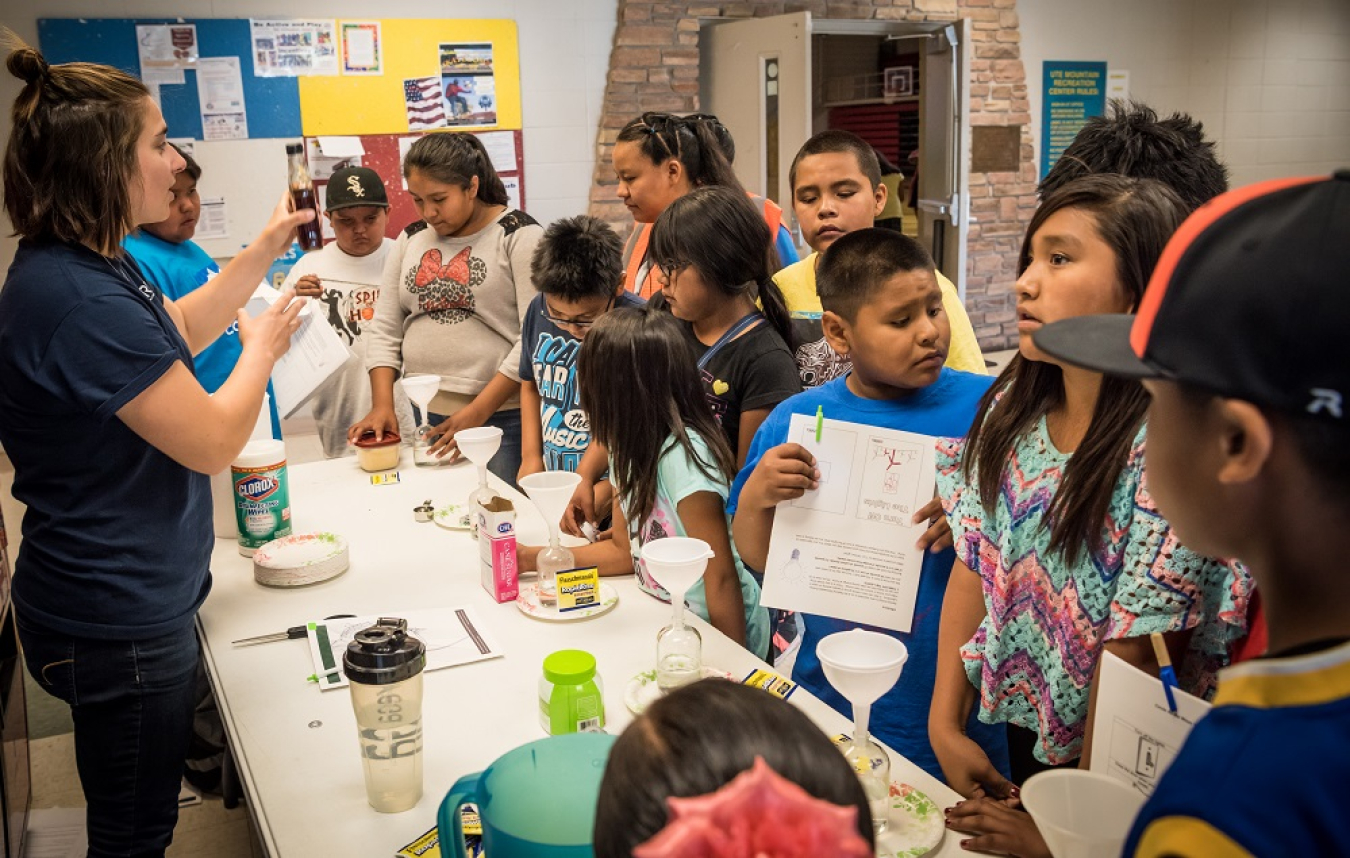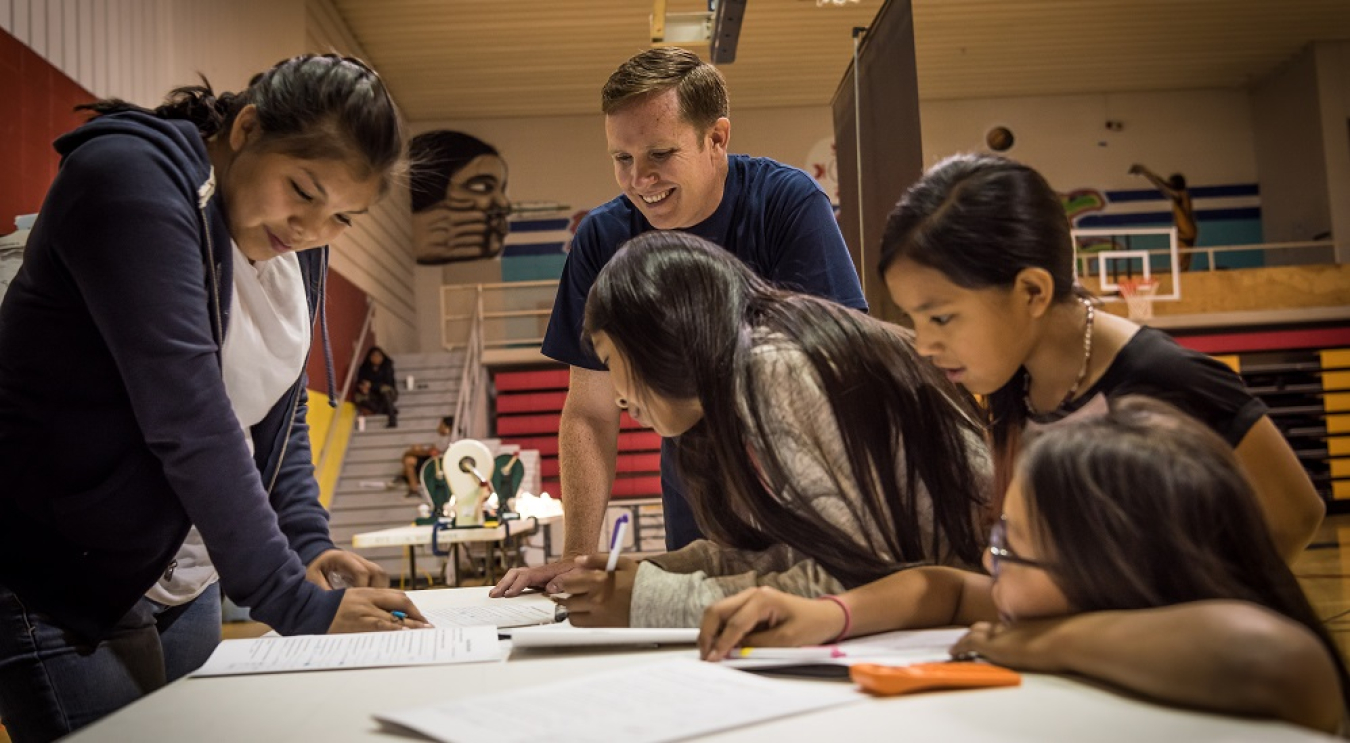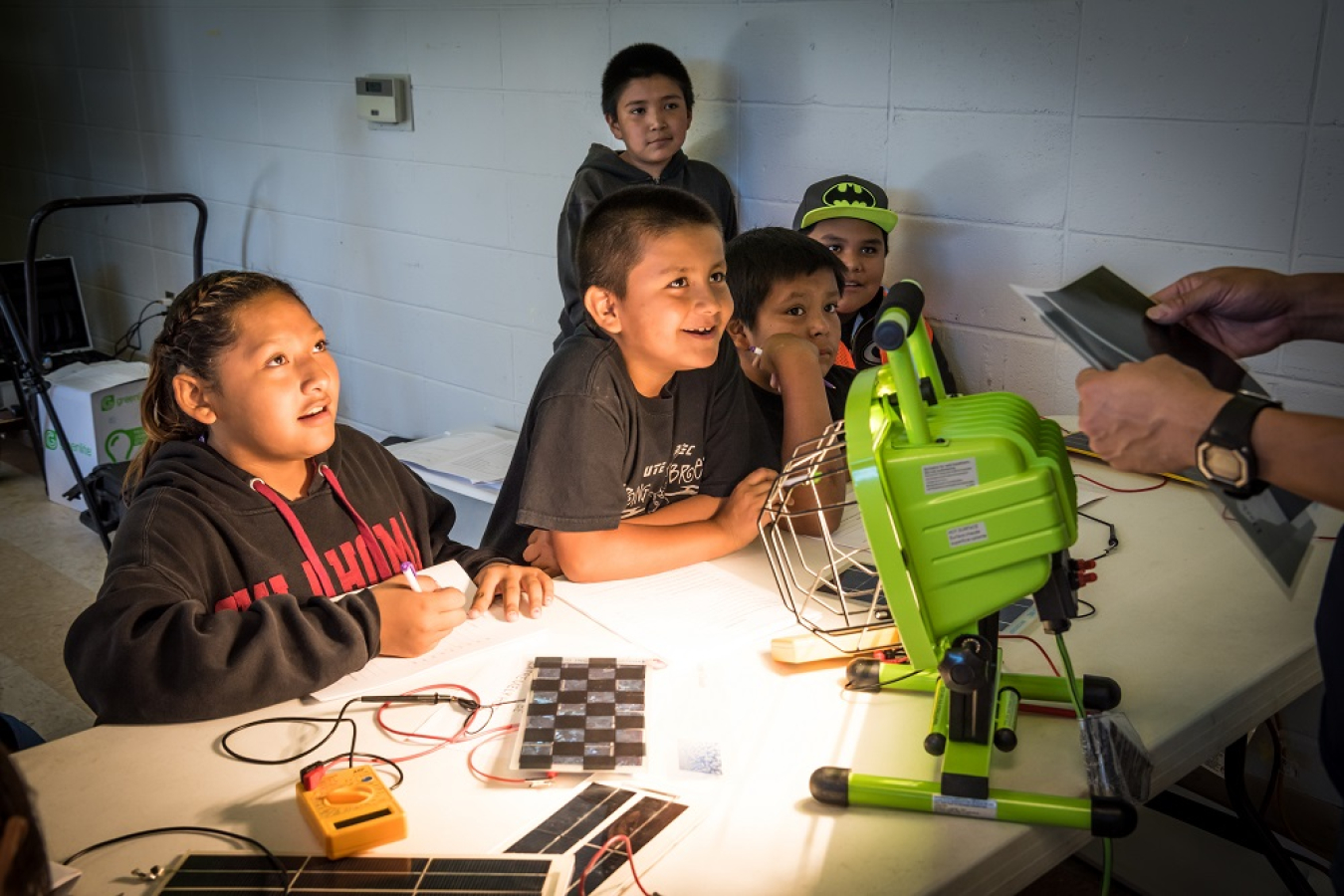Environmental Engineering Intern Rachael Boothe from NREL on hand during the Ute Mountain Ute Youth Energy Workshop.
Office of Indian Energy Policy and Programs
July 15, 2016
Environmental Engineering Intern Rachael Boothe explains biomass through a sugar balloon science experiment. Photo by Josh Bauer, NREL.
What are the key facts?
- Science, Technology, Engineering, and Math (STEM) skills are required to be competitive in the global race for energy development, create and maintain healthy economies, and foster innovation and excellence. Despite representing 70% of all college students in the United States, minorities and women only represent 45% of undergraduate STEM degree holders
- STEM education for Native youth is a means of creating hope for the future, developing resilient economies for tribal governments, and building strong, economically sovereign Native nations for future generations
- To promote STEM education in tribal communities, the Office of Indian Energy engages Native youth in real-world, hands-on experiences designed to build leadership and advocacy skills with a focus on tribal energy and climate resiliency
- 36 undergraduate and graduate interns have participated in the Office of Indian Energy’s college student internship program since 2002
- Since 2012 the START Program has provided project development and community energy planning technical assistance to 30 tribes and Alaska Native villages
Let me start off by saying that teachers are wildly impressive individuals. I mean that. Recently I had the fun and excitement of teaching around 100 kids ages 8–14 about various renewable energy technologies, including biomass. I was exhausted by the end of the day, but what an exciting day it was!
I was one of five technical experts from the National Renewable Energy Laboratory (NREL) on hand during the Ute Mountain Ute Youth Energy Workshop held on July 6 at the Ute Mountain Recreation Center. Located near the Four Corners Monument in Towaoc, Colorado, the Ute Mountain Ute Tribe was one of five projects selected to receive technical assistance through the U.S. Department of Energy Office of Indian Energy’s Strategic Technical Assistance Response Team (START) Program in 2015.
The START Program assists Indian tribes in the 48 contiguous states, as well as Alaska Native regional corporations, with moving renewable energy projects closer to implementation. Through START, tribal project teams receive technical expertise and unbiased guidance in a variety of project development areas, including stakeholder education and outreach. In this case, the Tribe elected to focus on educating tribal youth about renewable energy technologies. Energy awareness is key to getting the whole community on board when it comes to renewable energy projects—and youth can be powerful conduits for building that awareness. Information is often shared when kids learn something at school and then go home and tell their parents or other family members about it, and such messages tend to be well-received.

Colton Heaps helps kids with their worksheets at the Energy Efficiency Station. Photo by Josh Bauer, NREL.
In this case, the kids from the Ute Mountain Ute Tribe were already participating in a summer camp, so we had a captive audience.
During the workshop we taught students about renewable energy, doing hands-on demonstrations and experiments with four rotations of around 20 elementary school in the morning and then three rotations of 6 older kids in the afternoon. My workstation was for biomass. I set up two tables, one with all different types of biomass plants on individual plates for the kids to touch and feel (and actually taste in one mistaken example). The other table housed my sugar balloon science experiment. I would first explain to the kids how biomass can be used to make fuel and heat in a process similar to our digestion. Then I would take them over to the science experiment table where the kids mixed yeast, water, and all different types of sugars in a beaker. The different sugars represented different types of sugars we get from plants that can be used to generate biomass energy.

Kids learning about the different types of solar panels and arrays. Photo by Josh Bauer, NREL.
The favorite part of the experiment for the kids was definitely putting a balloon on top and watching the chemical reaction take place to fill the balloon with gas. For the younger kids, I ended up having to explain the carbon dioxide that was given off in the reaction as “yeast farts.” That information was apparently easily retained. We then measured the balloon and saw how different balloons had larger circumferences, therefore gave off more “yeast farts” and more energy was produced. I explained that as scientists we attempt to find which biomass sources give off the most amount of energy. For the older kids, we measured the overall volume of the balloon and talked about other ways we can possibly utilize biomass in our everyday lives.
I think the kids had fun with our science experiments and were excited to see how they could make small changes at home to reduce their impact on the environment.
- Rachael Boothe, Environmental Engineering Intern, National Renewable Energy Laboratory

